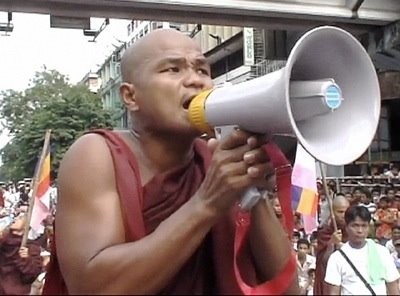Not your average hidden camera show
‘Unmistakably relevant’ documentary traces the activities of underground videographers in Burma
“When I pick up the camera, maybe my hands are shaking. I may have a heavy heartbeat. I have nothing in my mind, I have only my subject. I just shoot.” The subject, whom we later come to know as “Joshua,” describes his work.
Joshua is a member of an underground collective of videographers in Myanmar (formerly known as Burma, which it is referred to as in the film), a country where anyone using a camera in public runs the risk of imprisonment, torture and even death. The group is called Video Journalism Burma.
From the first moment Joshua turns on his camera, shooting a one-man protest, which is quietly and abruptly taken care of, you can feel the extreme tension behind the lens.
In a country that has been controlled by a brutal military dictatorship for nearly 40 years, Joshua has only one weapon to fight back with. Smuggling the footage out of the country, journalism is not an institution here so much as it is a guerrilla operation.
The footage, which makes up almost the entirety of the film, is startling, breathtaking and shocking. Through Joshua’s, and other members of VJB’s eyes (or backpacks), we are treated to sights few people in the outside world have ever seen.
Danish filmmaker Anders Østergaard’s film mainly takes place during September 2007, a month few Burmese – whether civilians, soldiers or leaders – would soon forget.
That fateful September the government of Burma attempted to tighten its grip over its already low-income population by doubling the price of fuel nationwide. The move would rally the people of Burma, specifically Rangoon, to come together and challenge their unrighteous government for the first time in 19 years. Led by hundreds of brave Buddhist monks, tens of thousands would march the streets of Rangoon to protest.
Before that point, as we witness in the film, protests were never more than a handful of people and were dealt with swiftly by the ever watchful secret service men who seem to be on every street.
In response to the mass protest, the government made it illegal to have gatherings of five or more people in public. But the people, now awoken from their sleep of fear, refuse to allow themselves to be oppressed once again without a fight.
The first hand documentation of this conflict, which is sometimes almost nauseatingly shaky, allows us to experience the real fear of an oppressed people, as well as the growing hope that they may be the ones who will end this.
What effect this film itself will have on the fate of Burma – or these brave filmmakers – is unclear. But as a raw document of the power of journalism, even under a regime as oppressive as this, it is unmistakably relevant.
Published in Volume 64, Number 2 of The Uniter (September 10, 2009)







